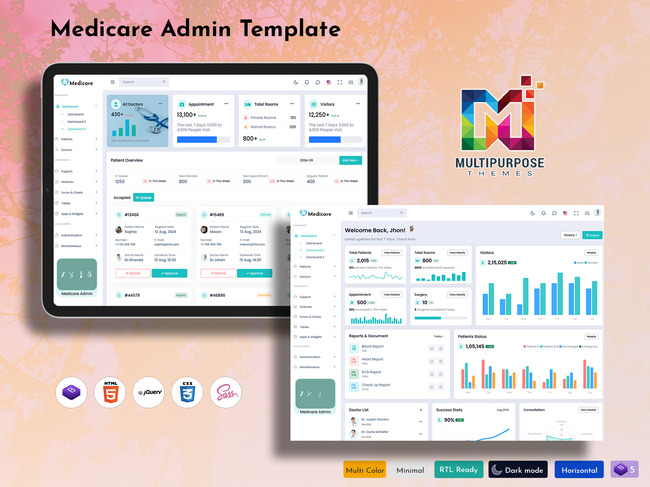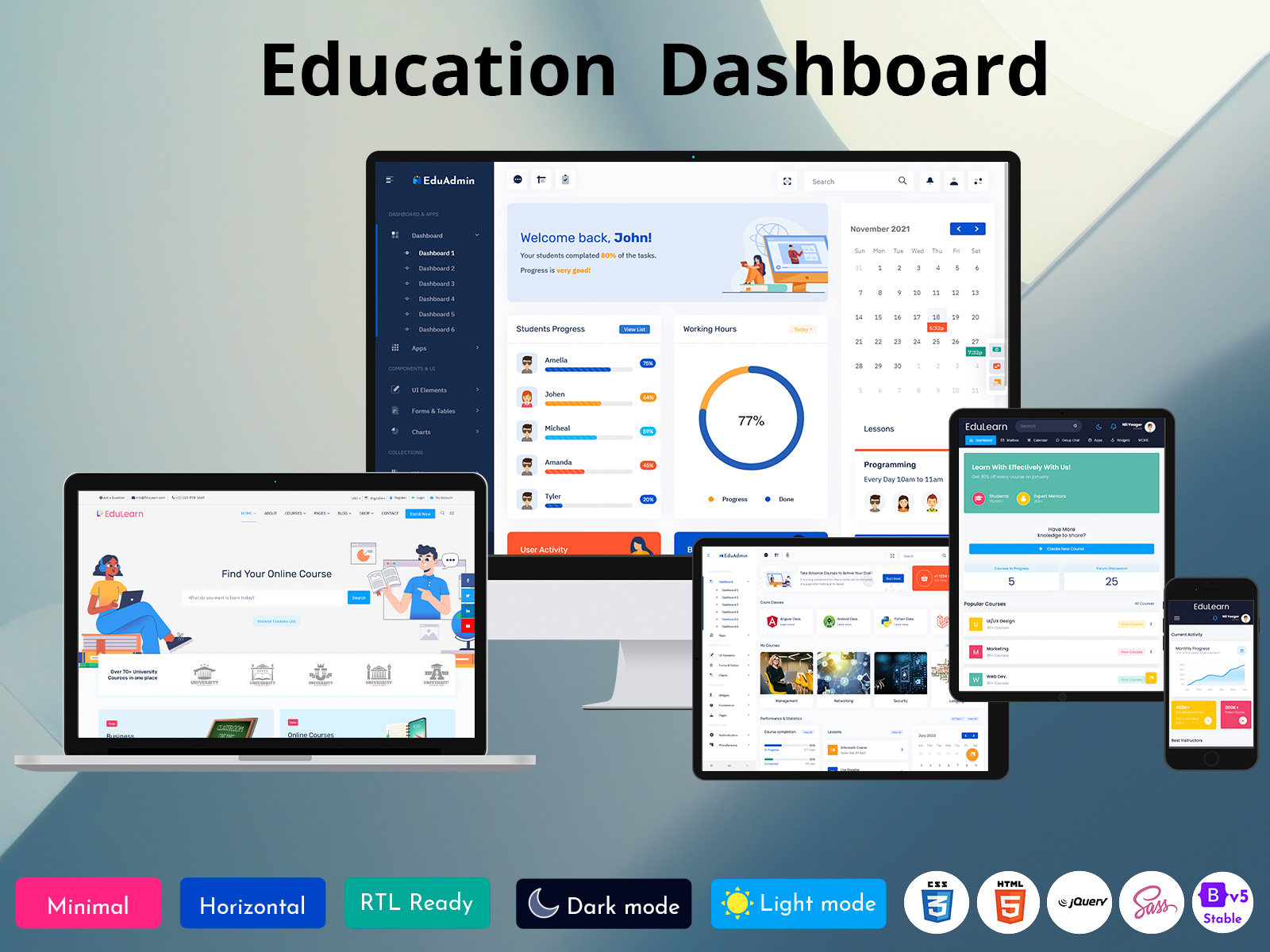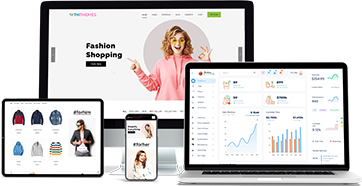Managing wedding events is a beautiful but complex responsibility. Every bride and groom dream of…

A New Era of Hospital Management with New Hospital Dashboard
Reading Time: 7 minutes
Welcome to the Multipurpose Theme! We’re excited to announce the launch of our new Hospital Dashboard within the *Medicare Admin Template*, featuring the latest cutting-edge tools. Designed for efficiency and ease, these Medical Dashboards Design will Upgrade your healthcare management with real-time insights and intuitive navigation. Explore the future of medical admin!
BUY NOW
Medicare Admin

What is a Hospital Dashboard Template?
A Medical Dashboard is a digital interface designed to help healthcare professionals manage and monitor hospital operations and patient care. It consolidates various data streams—clinical, administrative, financial, and operational—into a user-friendly, visually appealing interface. The template allows hospital staff to track real-time data, analyze performance, and make informed decisions based on up-to-date information.
Hospital dashboards are typically customizable to the specific needs of the organization, ensuring that relevant information is presented in an easily digestible format. This can include:
- Patient outcomes
- Bed occupancy rates
- Staff schedules
- Patient wait times
- Financial performance metrics
- Hospital resource utilization (equipment, medication, etc.)
By bringing together disparate data sources into one comprehensive interface, hospital dashboards can significantly enhance operational efficiency, clinical decision-making, and patient satisfaction.
Dashboards of Medicare Admin
New Dashboard – LTR Style – Light Version
MORE INFO / BUY NOW DEMO
New Dashboard – LTR Style – Light Version
MORE INFO / BUY NOW DEMO
Dashboard – LTR Style – Light Version
MORE INFO / BUY NOW DEMO
Dark Dashboards of Medicare Admin
New Dashboard – LTR Style – Dark Version
MORE INFO / BUY NOW DEMO
New Dashboard – LTR Style – Dark Version
MORE INFO / BUY NOW DEMO
Dashboard – LTR Style – Dark Version
MORE INFO / BUY NOW DEMO
The Importance of Hospital Dashboard
The healthcare industry is one of the most complex and data-intensive sectors. Managing patient care, ensuring compliance with regulatory standards, optimizing operational workflows, and maintaining financial health are all critical components that require close monitoring. Without a streamlined way to view and assess these factors, hospitals may struggle to meet their goals and may experience inefficiencies, miscommunication, or poor outcomes.
Hospital dashboards provide several key benefits that help organizations mitigate these challenges:
Real-Time Data Visualization: Medical Dashboard consolidate and display data in real time, allowing hospital administrators to monitor key metrics, such as emergency room waiting times, bed availability, patient satisfaction, and staff performance. This information can be vital for quick decision-making, especially in high-pressure situations.
Enhanced Decision-Making: With access to real-time data, decision-makers can evaluate hospital performance and identify issues before they escalate. Whether it’s resource allocation, patient care prioritization, or financial planning, dashboards help decision-makers act more effectively and with greater confidence.
Operational Efficiency: By visualizing key operational metrics like bed occupancy rates, patient flow, staff availability, and equipment usage, hospitals can streamline their operations. This can lead to faster response times, reduced waste, and better patient care delivery.
Improved Patient Care: Hospital Dashboard are not just about operational efficiency—they can also help improve patient outcomes. For example, tracking patient vitals and treatment plans can ensure that healthcare providers respond more quickly to patient needs, reducing the chances of errors and improving overall quality of care.
Compliance and Reporting: Hospital dashboards can facilitate compliance with healthcare regulations, including HIPAA (Health Insurance Portability and Accountability Act) and other local or federal standards. Dashboards help ensure that relevant data is collected, analyzed, and reported in accordance with legal requirements.
Videos of Medicare Admin
Key Features of Medical Dashboard
A hospital dashboard template should provide a comprehensive view of hospital operations and performance. Below are some key features that make hospital dashboards effective:
Customizable Layouts: A good hospital dashboard template allows for customization based on the needs of different departments (e.g., emergency, inpatient, outpatient, and administrative departments). Each department can configure the dashboard to show the most relevant metrics.
Key Performance Indicators (KPIs): A hospital dashboard should display relevant KPIs that allow administrators to track the performance of various aspects of hospital operations. Common KPIs in healthcare include:
- Patient outcomes (e.g., readmission rates)
- Patient wait times
- Bed occupancy rates
- Average length of stay (ALOS)
- Staff productivity
- Financial metrics (e.g., revenue, costs, and profit margins)
Data Integration: Hospital Dashboard should be able to integrate with multiple data sources, including electronic health records (EHR), hospital information systems (HIS), and other clinical or administrative software. Integration ensures that data flows seamlessly into the dashboard without manual data entry.
Real-Time Updates: Given the fast-paced nature of healthcare, dashboards must update in real time to reflect the most current data. This allows hospital staff to respond immediately to changing circumstances.
Visualizations: To make data easy to understand, hospital dashboards often include visual elements like graphs, pie charts, bar charts, and heatmaps. These visual tools help hospital staff quickly interpret trends, patterns, and anomalies.
Mobile Compatibility: Increasingly, hospital staff is working on the go. Having a hospital dashboard template that is mobile-friendly ensures that key personnel can access important data on their smartphones or tablets, even when they are away from their desks.
Alerts and Notifications: Dashboards can be programmed to send automated alerts and notifications when certain metrics fall outside predefined thresholds. For example, if a patient’s vitals are abnormal, a nurse or physician can receive an immediate alert to take action.
Patient-Centered Metrics: Some hospital dashboards are designed specifically to enhance patient care by tracking patient outcomes, satisfaction, and engagement. Patient-centered metrics could include:
- Patient satisfaction scores
- Number of patients seen
- Follow-up appointment scheduling
- Discharge summaries and post-discharge care
Data Security and Privacy: Medical Dashboard must adhere to strict data security protocols, especially since healthcare data is sensitive. Encryption and access controls are essential features that protect patient privacy while allowing staff to access important information.
Benefits of Using a Medical Dashboard
A hospital dashboard template can provide a wide range of benefits for healthcare organizations. These benefits go beyond operational efficiency to include improved patient care, reduced costs, and enhanced employee engagement. Here are some of the key advantages:
Improved Patient Outcomes: Real-time access to data allows healthcare professionals to monitor patient health more effectively. This can lead to quicker responses to deteriorating patient conditions, more personalized care plans, and improved patient outcomes overall.
Operational Cost Reduction: Medical Dashboard help hospitals identify inefficiencies in resource utilization, whether it be in staffing, equipment, or supplies. By tracking these metrics closely, hospitals can optimize operations and reduce costs, ultimately improving the hospital’s financial health.
Enhanced Collaboration: Dashboards encourage collaboration among departments by providing a common platform for sharing important data. Whether it’s a doctor coordinating with nurses or an administrative team coordinating with financial departments, hospital dashboards break down silos and foster a more collaborative working environment.
Better Compliance: Dashboards help hospitals remain compliant with various regulations, such as those set by the Centers for Medicare & Medicaid Services (CMS) or local health departments. With automated reporting capabilities, dashboards simplify the compliance process by ensuring that all necessary data is collected and available for review.
Data-Driven Decisions: One of the most significant advantages of hospital dashboards is their ability to provide decision-makers with data-driven insights. By relying on accurate, up-to-date information, hospital leaders can make informed decisions that lead to better patient care and improved operational efficiency.
Best Practices for Implementing a Hospital Dashboard
To fully realize the benefits of a hospital dashboard template, healthcare organizations need to adopt certain best practices during the implementation phase. These include:
Involve Key Stakeholders: When implementing a dashboard, it’s essential to involve all key stakeholders, including physicians, nurses, administrators, and IT staff, in the process. Their feedback will help ensure that the dashboard meets the unique needs of each department.
Define Key Metrics: Before implementing the dashboard, it’s crucial to identify the key metrics that the hospital wants to monitor. These metrics should be aligned with the hospital’s goals, such as improving patient outcomes, reducing costs, or increasing staff efficiency.
Train Users: Once the dashboard is set up, training hospital staff on how to use the system is essential. Proper training ensures that users can navigate the dashboard effectively, interpret data correctly, and make informed decisions.
Continuously Monitor and Improve: Medical Dashboard should be regularly monitored and refined. As hospital needs evolve, the dashboard should be updated to reflect new priorities and metrics. Feedback from users can also be used to enhance the dashboard’s functionality.
Ensure Data Security: Data security is paramount in healthcare, so it’s important to implement strong security measures for dashboard access. Role-based access control, encryption, and regular audits are essential to maintaining patient privacy and compliance.
Conclusion
In conclusion, a Hospital Dashboard e is a powerful tool for improving hospital operations, patient care, and decision-making. By providing real-time data and visualizations, it enables healthcare administrators and clinicians to monitor key metrics, respond to challenges promptly, and ultimately improve patient outcomes. The adoption of a dashboard is no longer just a luxury but a necessity in the modern healthcare landscape. With proper implementation and continuous optimization, hospital dashboards can transform the way healthcare organizations operate, making them more efficient, responsive, and patient-centric.
 skip to Main Content
skip to Main Content










This Post Has 0 Comments